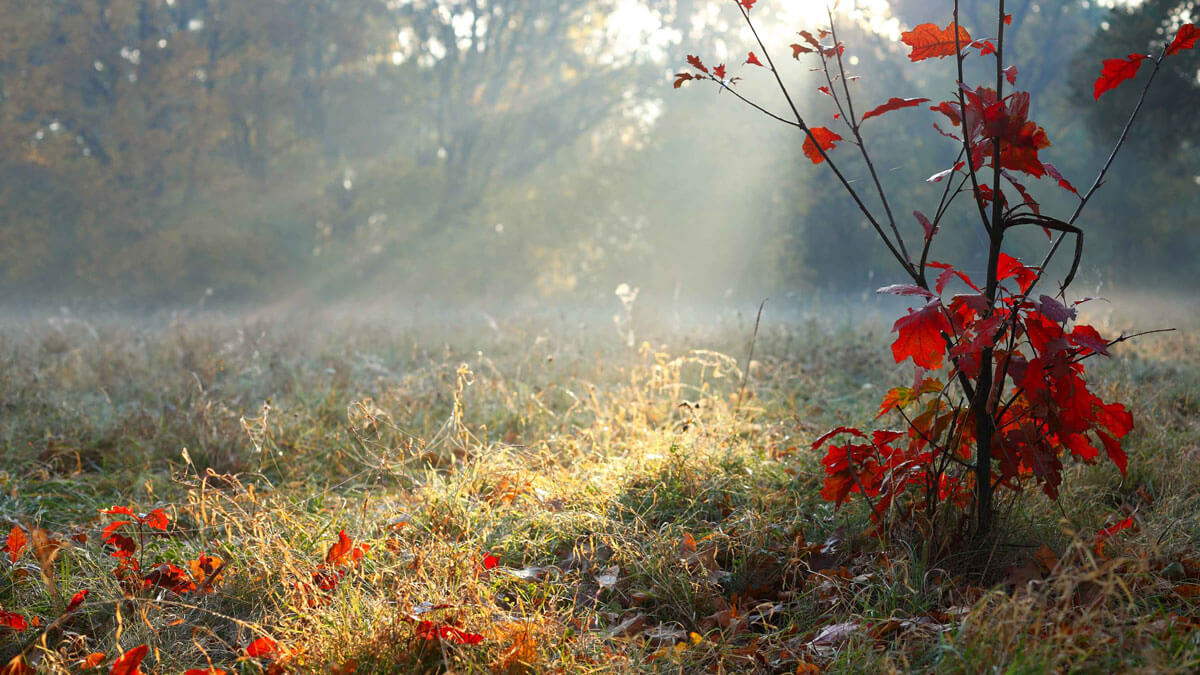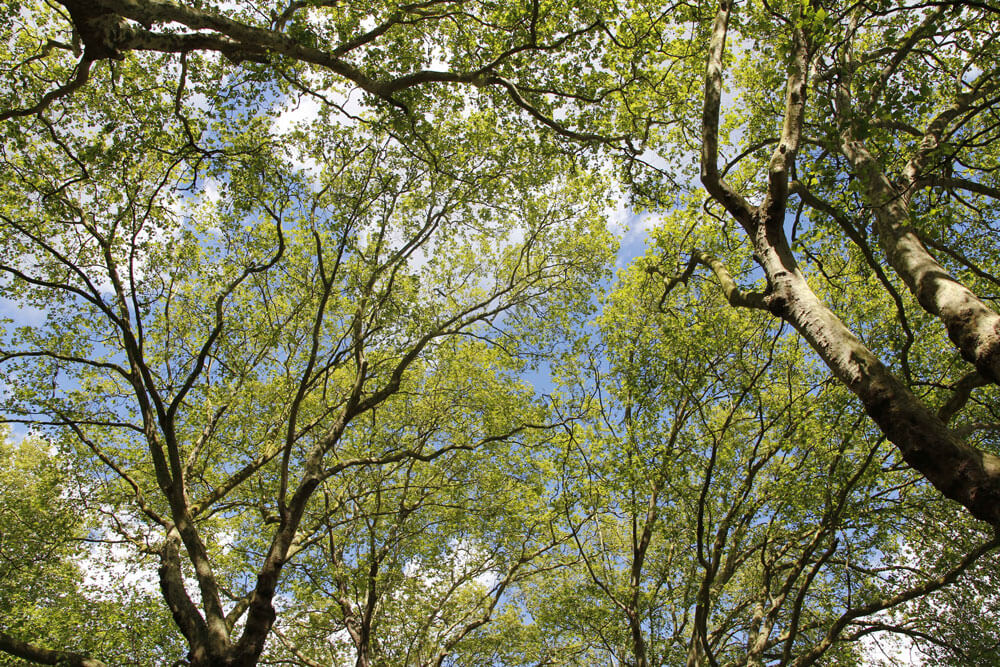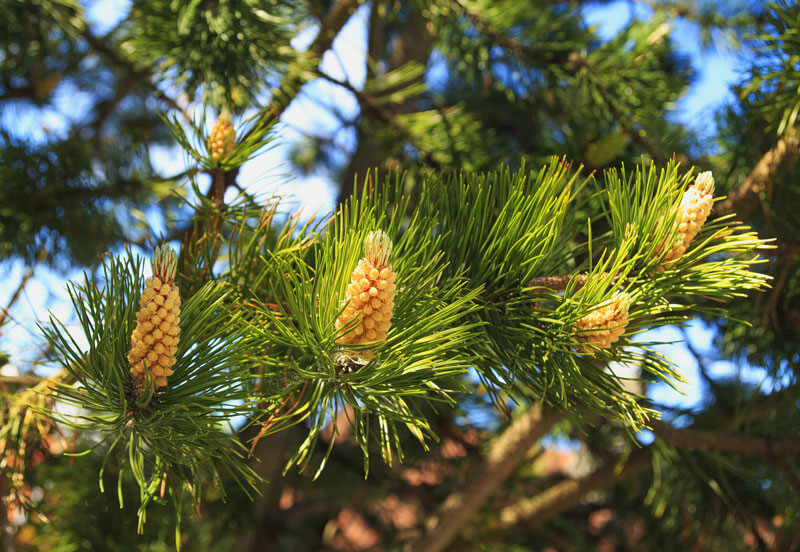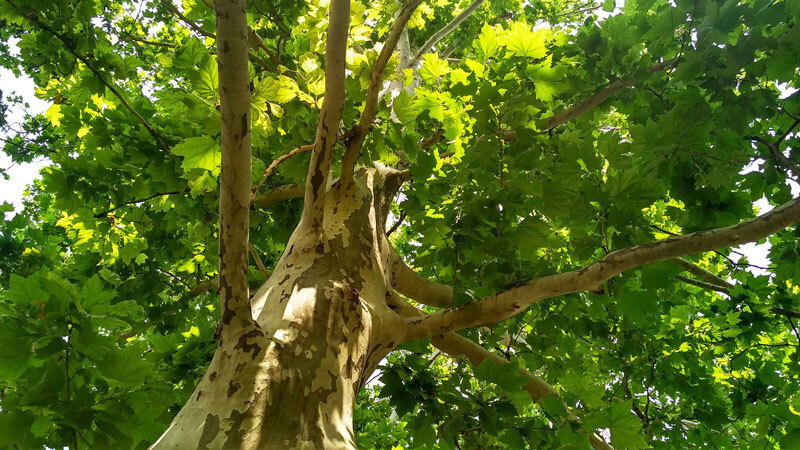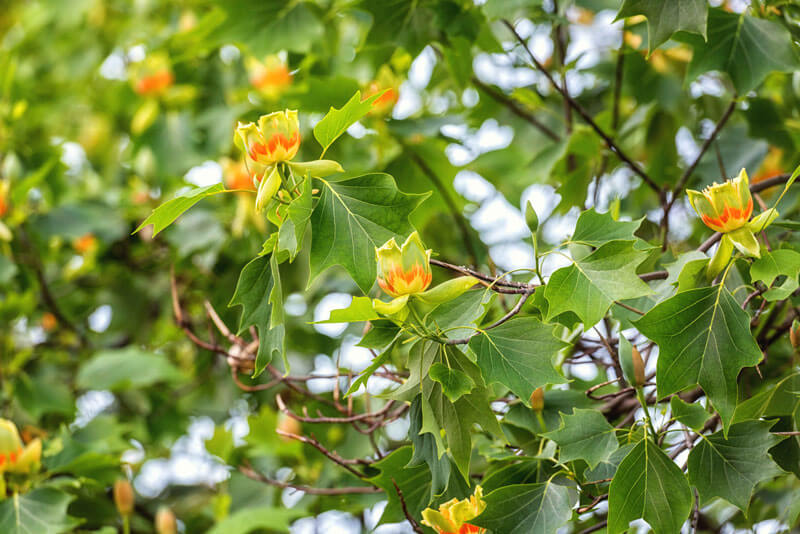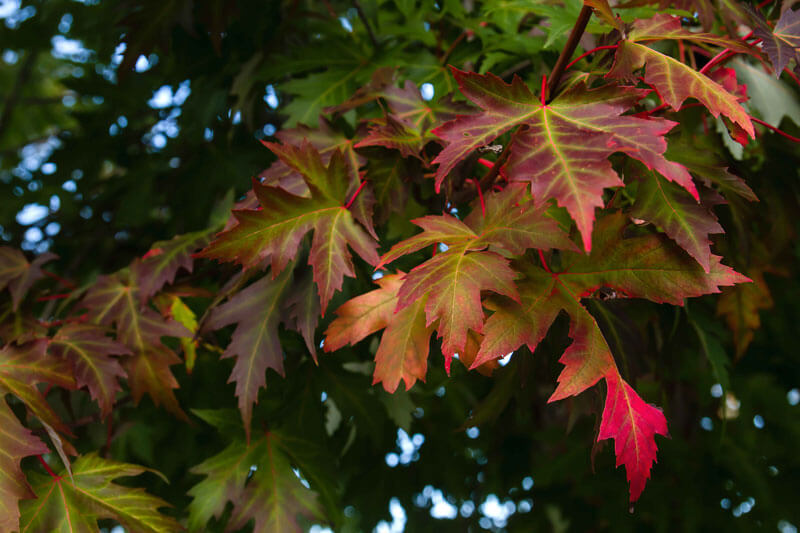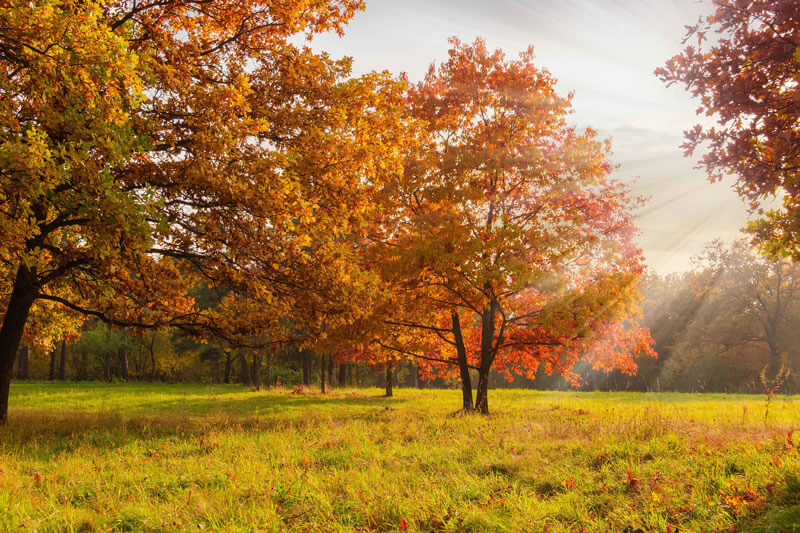Table of Contents
Everyone knows it is a great time to plant in the spring, but did you know that fall is a great time to plant in Ontario, as well?
In fact, for trees and shrubs, fall is a more ideal time to plant.
Read on to find out why you want to plant trees in the fall and the best way to maintain your newly planted trees and shrubs.
When is the best time to plant trees in Ontario?
The best time to plant varies from region to region.
In temperate or moderate locations where the weather is consistent year-round, there may not be a preferred time to plant, and you can at any time.
For many areas, like Ontario, that experience four distinct seasons, fall is a better time to plant your trees and shrubs.
Plant your trees any time from the end of August to mid-October – sometimes even later is okay.
It’s safe to plant trees until the ground is frozen solid, generally after the first hard frost.
Even if there is snow on the ground, if you’re able to stick a spade into the soil, it’s still okay to plant.
Benefits of fall planting
Planting them in the fall gives your tree an extra growing season before the stress of summer.
It gives your tree time to establish its root system in the still-warm soil while not having to focus on providing energy to the new growth that comes in the spring.
As summer ends and fall begins, the soil temperature remains warm longer than you think. Trees love the warm soil as the air gets cooler. It reduces water loss and helps with transplant shock.
As the weather cools further, trees move into their dormant phase. They can focus all of their energy on growing roots and preparing for the winter ahead.
Many people fear that young trees can’t withstand the winter. Fortunately, that is not true.
Trees go dormant in the winter, which is the equivalent of going into hibernation.
It slows down the tree’s growth, energy consumption, and metabolism.
When trees are dormant, they shouldn’t require any extra care.
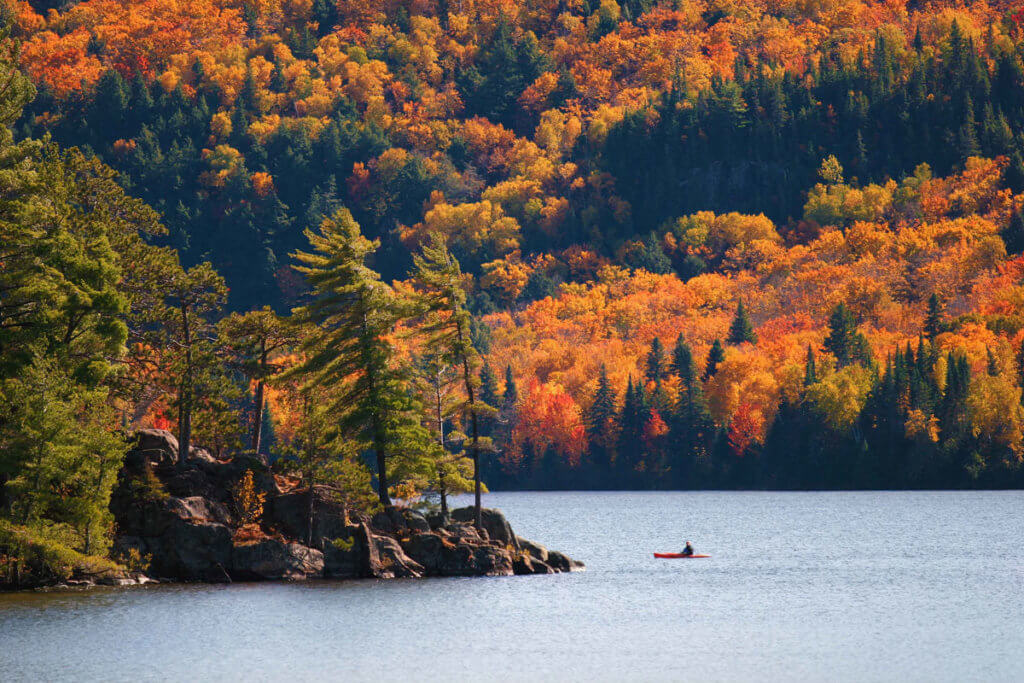
Planting trees in the spring
Spring planting is not as great a time to plant new trees because the wet soil makes it harder for the tree to root and take hold. Trees and shrubs prefer dryer ground to properly roots.
Note: There are some exceptions to this rule. Contact a professional arborist or properly research your tree before planting.
You can still plant trees in the spring. Just know that they will take a little extra care, like extra watering, to get established.
When planting trees in the spring, trees split their energy between growing roots and putting out new buds and leaves.
Spring also brings rapidly rising temperatures, increasing water loss from evaporation, and the threat of a drought in the summer.
Steps to plant trees in the fall
Minimize stress to your trees
When transporting your new tree from the nursery, make sure to protect it by padding the trunk and branches with burlap and tie the loose ends with rope.
Plant as soon as possible, but if planting right away is not possible, store the tree in a cool, shaded area. Water the tree as needed to keep the roots and soil moist.
Carefully plant your tree
As mentioned above, plant the tree or shrub vertically with the root collar slightly exposed.
Fill the hole in around the root ball. You can either use the native soil that you dug up or buy good quality soil to supplement the nutrients in your soil. Make sure not to include any grass or sod in the soil.
Gently pack the dirt around the root ball until it is two-thirds full to ensure no air pockets.
Fill the remaining space with water to further pack the soil and allow the hole to drain properly. Finish filling the hole and make a barrier of soil around the root ball to direct water towards the roots.
Water your newly planted tree immediately after planting.
Maintaining your trees
Your tree requires the same care no matter the time of year that you plant.
- Always ring your tree with about 5 cm of mulch around the base of your tree. Give your tree some room and leave a couple of centimeters in between the mulch and the trunk.
- Water your tree when the soil and mulch are dry. Dig a three cm hole in the ground- if moist to the touch, do not water. If it is dry, give it a drink.
- Watering and care schedules vary by the tree. Get help by contacting an arborist to learn how to best maintain your tree.
How to prepare your trees for winter
- Wrap your trunk. Some trees are susceptible to frost cracks because of dramatic temperature changes. To prevent damage, wrap the trunks of younger trees up to the first branches and leave the wrap on until April. Use commercial tree wrap for best results.
- Mulch the base of your tree with wood chips, bark, or other organic matter to reduce soil evaporation and insulate against extreme temperatures.
- Recycle your leaves. Use as mulch at the base of your trees or blend them into the yard with a mulching mower so the soil can absorb the nutrients.
- Give your tree a soak. Before quitting watering for the winter, water the soil around your trees. Start at the base of the trunk and water to the diameter of the longest branches. Water slowly and thoroughly.
- A young tree requires the most attention.
- Wait to prune until the winter. Dormancy, especially in late winter, is a great time to prune your trees.
Tree Specialists
At Nature’s Shade, we know what’s best for trees, including how to best plant trees in the fall.
We will work with you to develop the best care plans for your newly planted trees and shrubs, ensuring the health, safety, and appearance of your landscape for years to come.
Visit our website or give us a call and request a FREE quote today!

